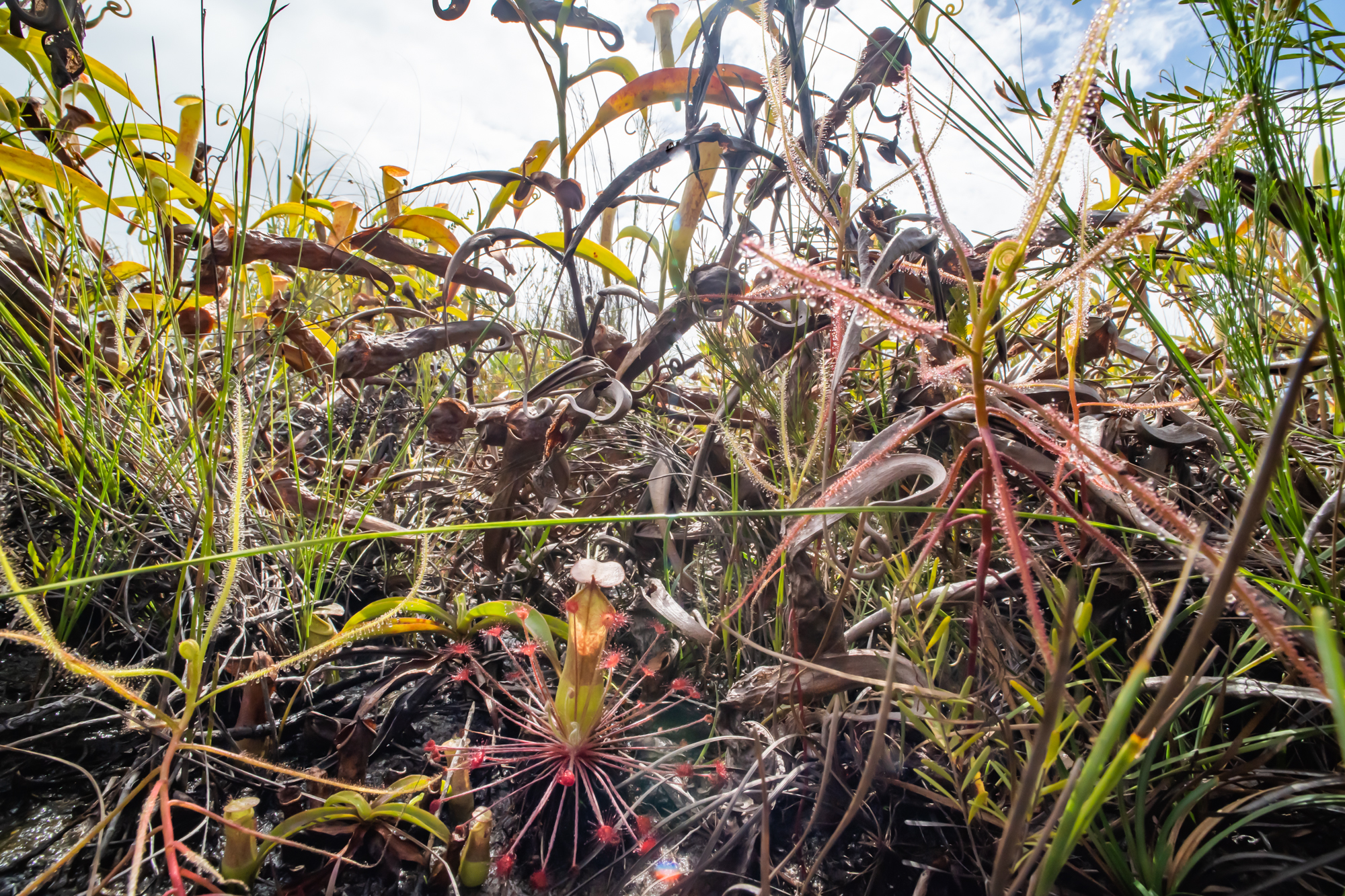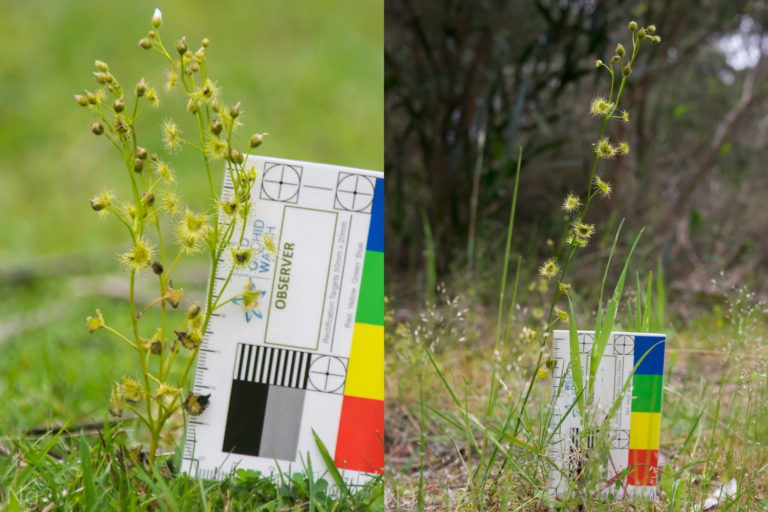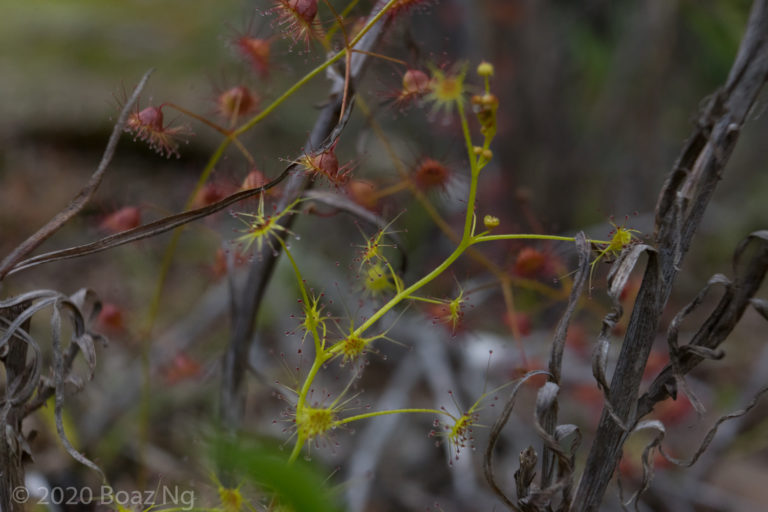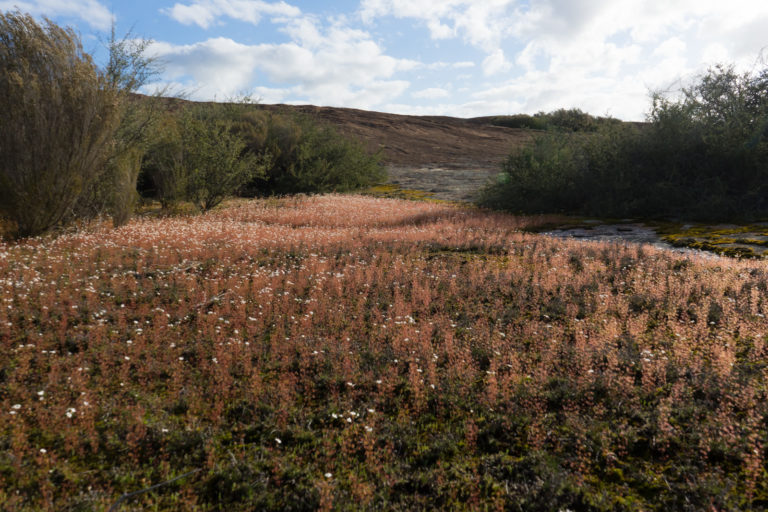Cape York is by no means easy to get to. Large stretches of the main road up the Peninsula get washed away by the wet season floods every year, only to be rebuilt with the onset of the dry season. It is due to this remoteness that the carnivorous plants of the tropical Far North are rarely observed and poorly understood. So as I left Sydney on an epic once-in-a-lifetime road trip to the most northerly point in Australia, a nervous excitement set in as I faced the thrill of facing the unknown.
After a few days of driving, I arrived at the Torrington State Conservation Area situated in the rolling granite hills of northern New South Wales. I was in unfamiliar territory and with that came the excitement of new carnivorous plant species. With really no direction as to where to go, I decided to drive down a rural road that looped back into a remote section of the wilderness, hoping to find some cool discoveries away from well-surveyed sites.
As the asphalt gave way to gravel, I noticed that the gutter was collecting water emanating from the gently sloping hillside. I pushed my way through the bushes onto a large slab of granite where the groundwater was forced out of the surface to form a seepage. Amazing displays of Utricularia dichotoma subsp. fontana lined the cracks in the rock, their vivid purple blooms exuding a luxurious aura in the balmy midday sun. This subspecies was new to me, their small corolla lips, backwards-pointed spur, and preference for terrestrial gravels were markedly different to the southern taxa I was familiar with. As I lowered myself to take pictures, a flash of orange caught my eye… It couldn’t be – could it?
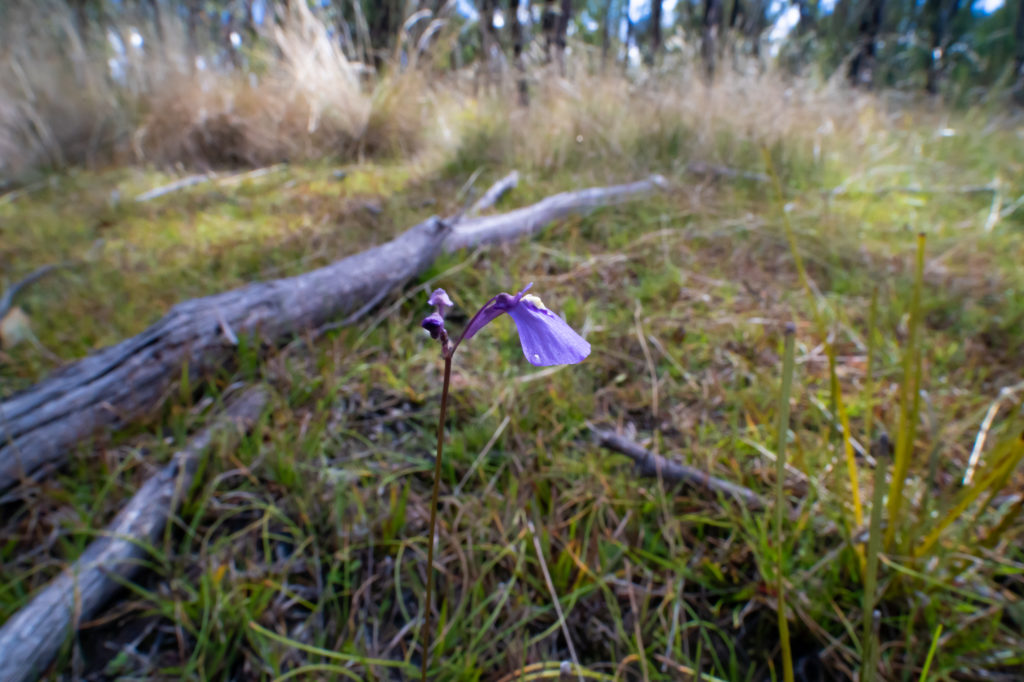
Amongst the field of purple was an oddly shaped flower with rusty orange back. A pink face and two golden dots near the centre were peering through the half-opened bloom. I had found the first ever sighting of Utricularia brennanii in the state of New South Wales! This taxon is typically associated with the wet heathlands of tropical Australia and its presence in such a southerly location was completely unexpected. I was buoyed by such a significant discovery so early in the trip and was eager to find more!
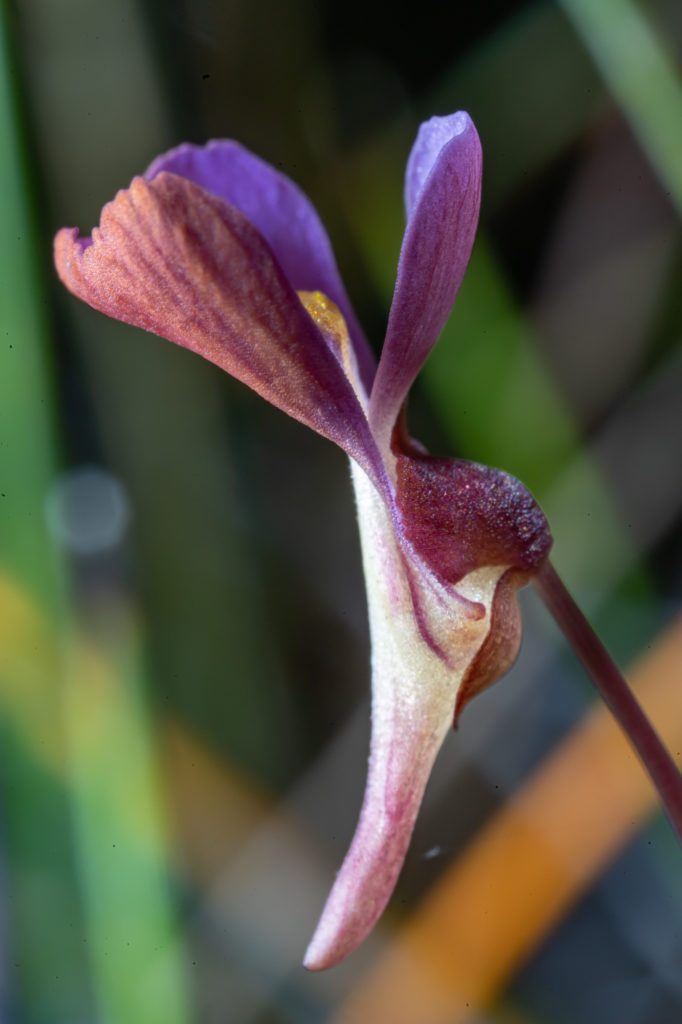
Not long after crossing the state border into Queensland, I was forced to stay put for three days after a freak rain event flooded the roads all around me. Yet it was these challenges that made my carnivorous plant discoveries just that bit more rewarding – kilometres of bush-bashing to see giant pink-flowered Drosera binata, battling an army of leeches to find D. schizandra deep in the rainforest, risking attacks from dagger-footed cassowaries to see D. prolifera in the unmarked wilderness. Each thrill only made me thirstier for the next adventure as I slowly journeyed up the coast.
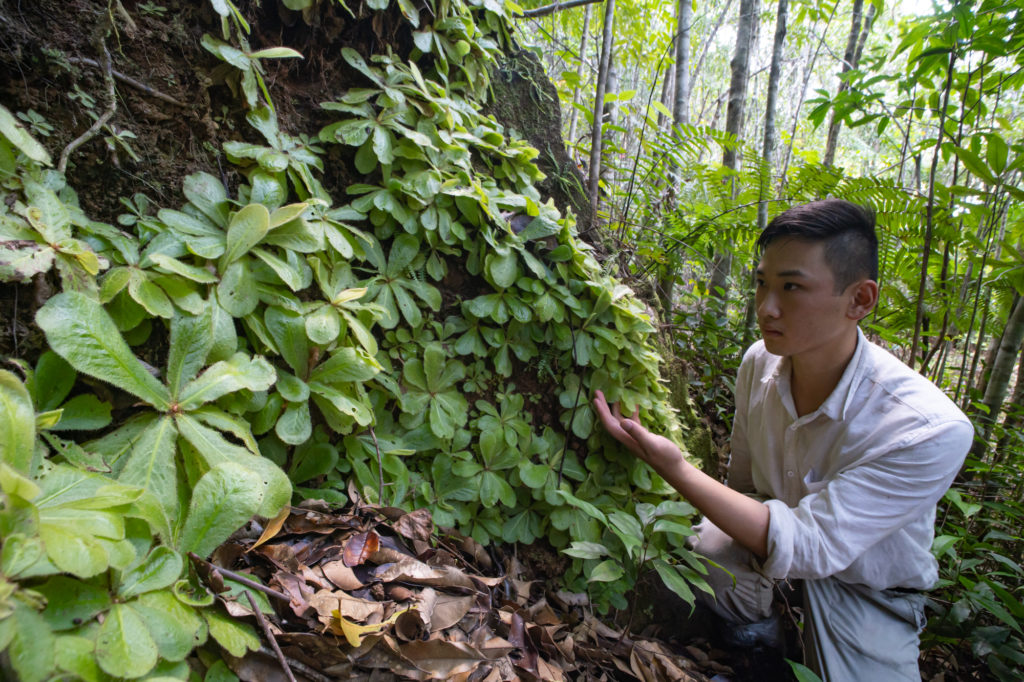
After a month into the trip, I finally made it to the Atherton Tablelands. Situated in the monsoonal tropics of Far North Queensland, the region experiences months of rain followed by dryness. It is during the transitional weeks between the wet and dry seasons that the bladderworts come to bloom and the sundews are at full maturity. Turning onto the dirt road through the ranges, my car kicked up a large cloud of parched bulldust as I wondered whether I had arrived too late and if the plants had dried up already. In addition to the lack of water, I was apprehensive about the capability of my Subaru Forester off the tarmac, a bit intimidated by the large 4wDs that everyone else seemed to drive. I was encouraged when I dipped into a valley and noticed a tiny creek line that was still flowing. After following the water upstream, I was led into a deeply eroded gully carved into the landscape during wetter periods. Groundwater seeped out from the walls on either side of me, creating the perfect habitat for an enormous population of carnivorous plants. Hundreds of Drosera serpens glowed in the wet clay, catching the light with their long, spider-like arms. Colourful rosettes of D. burmannii glistened like a field of gemstones while abundant amounts of U. bifida littered the creek like yellow confetti.
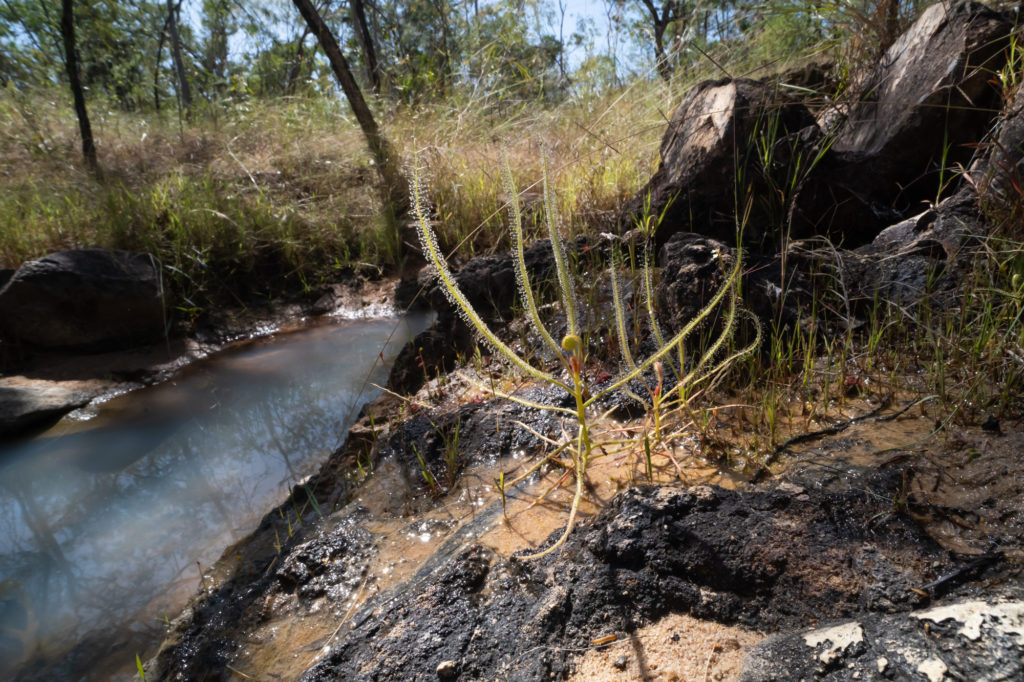
The gully gradually flattened out and as I clambered over a final embankment, I looked up and found myself in the midst of a broad, green meadow of grasses dappled under a sparse canopy of Eucalyptus. In this gentle valley, deep humic soil collected water draining from the ranges, acting as a reservoir that supported a lush and serene environment amongst the harsh skeletal hills. I noticed purple flowers peeking out from the grasses and was surprised to find Utricularia blackmanii! Its blooms are most distinctive when viewed from the side, with the long spur thrust backwards at an obtuse angle relative to the front of the flower. I had searched far and wide for this species, driving hundreds of kilometres to sites that had long dried up but it was ultimately by chance that I found it.
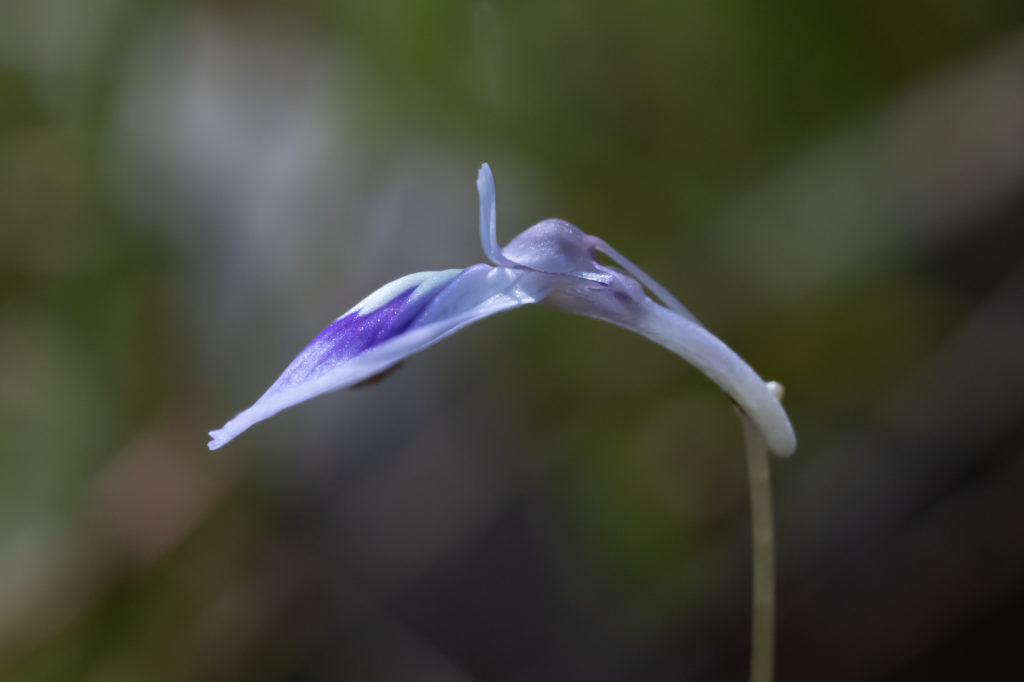
After taking in the peace of the valley, I continued onward down the road, absolutely relieved that I had arrived just in time to find that elusive bladderwort. This sense of calmness abruptly dissipated as I was confronted by an unexpectedly wide creek crossing. I had never actually crossed a proper creek before and wasn’t sure the car could handle it, but with a long drive back, I decided to face my fears and just go for it. I held my breath as drove into the water, praying that the car would make it through. My heart skipped a beat as the tyres momentarily slipped on the sandy bottom of the creek! But the momentum pushed it forwards and I regained enough traction to pull the car up on the other side of the crossing.
Emboldened by the fact I didn’t drown, I decided that now was the time to tackle the infamous Cape York Peninsula all the way to the very tip of the Australian continent. Either I’ll make it or I’ll die trying! Well, maybe not die but I certainly faced the prospect of a very expensive tow that I’m still not completely sure my insurance would have covered. Either way, the stakes were high and the risk excited me.
The first few hundred kilometres up the Peninsula were beautifully sealed and undulated between the gentle hills of the hinterland. Yet it was clear from the golden grass and dry creek beds that the inland tropical savannah had long dried up, so I detoured towards the coast to survey the wetter lowlands by the sea. After a day or so, I was once again in the midst of the sandy open heathlands which I knew always had a multitude of carnivorous plants.
There’s a certain paradox in the field where plants in abundance can make you bored as you search for new discoveries. Such was the case for Drosera petiolaris – the species was basically anywhere with the slightest hint of water and their sheer abundance caused my eyes to glaze over them. Everything seemed to ‘just’ be D. petiolaris – mature plants, seedlings, big rosettes, compact rosettes, plants with stems … hang on – a stem? How strange… In the back of my mind, I vaguely remembered a newly described sundew, so I took some reference shots and drove up a hill to get phone reception and downloaded the scientific paper.
My heart began to race as I glanced back and forth between the paper and my camera. I couldn’t believe it – I had found Drosera stipularis! This rare woolly sundew is distinguished by its diminutive rosettes that grow at the end of an elevated stem of accumulated foliage and is named for the prominent stipules that emerge from the centre of the plant. I thought it had a rather uncanny resemblance to a pygmy sundew, a remarkable example of convergent evolution where such adaptations allow the tiny plants to persist above the ever-shifting sands of their environmental niche.
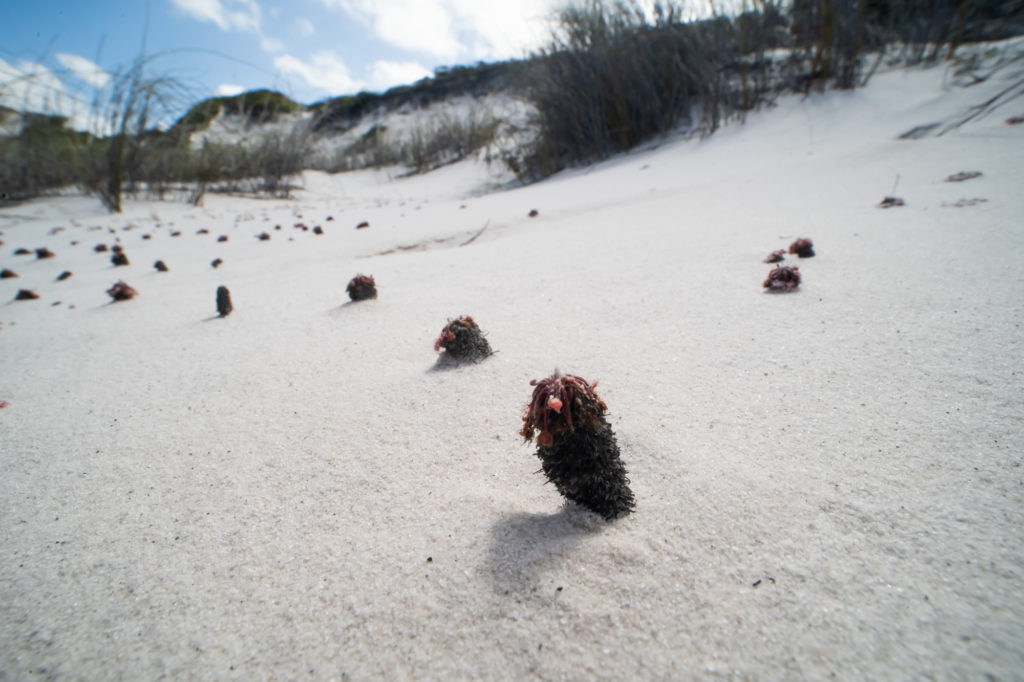
Although the sand was deep, the groundwater accumulated during the wet season forms a network of persistent swamps in the dips between the dunes. Most of these had the typical selection of tiny but common bladderworts such as Utricularia nivea, U. quinquedentata and U. minutissima – nothing out of the ordinary, but you never know what might present itself at the next site. As I came to another swamp, I quickly glanced into the tannin-stained waters and saw an unfamiliar white bloom. The flower was small, with a flared petal and inflated flower stalk. No way… Was this the legendary U. albiflora?
Utricularia albiflora was one of the first Australian bladderworts ever described to Western science, with a collection made during Cook’s original voyage. It was then lost and misidentified for over 200 years before it was recently rediscovered. With only a handful of people ever seeing the plant, this would make it the rarest bladderwort I’ve ever found!
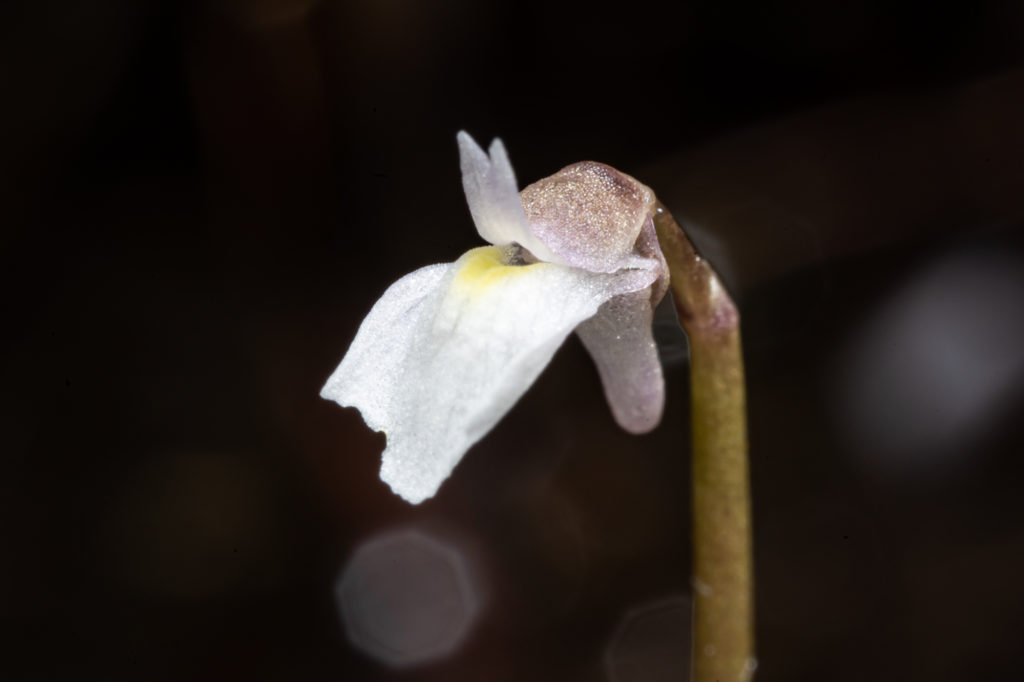
I was practically dancing as I photographed this extremely rare plant around the periphery of the swamp. It was then that something equally spectacular caught my eye. A strange flower with long antennae-like projections vibrated in the breeze as if it were mimicking an insect. I stared in disbelief – I had found Utricularia lowriei! Within the space of an hour, I had sighted three of the world’s most elusive carnivorous plants. I could only wonder what else Cape York was hiding.
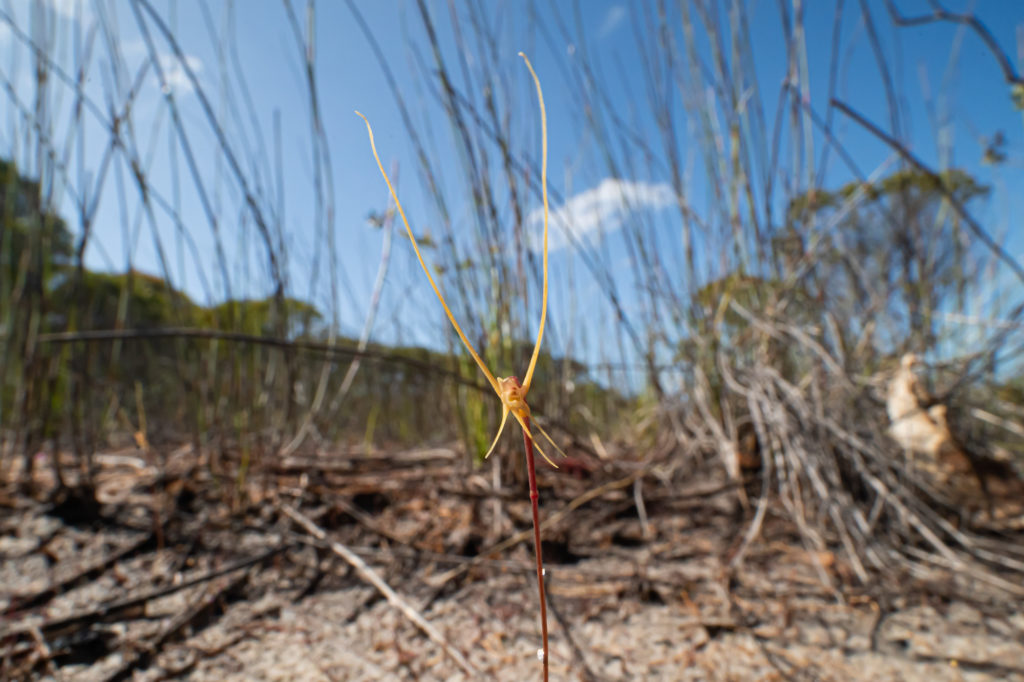
As I penetrated further north into the Peninsula, the nicely graded highway soon gave way to a horrendous dirt road that was notorious for wrecking cars with its extreme conditions. Driving on heavily corrugated surfaces requires some speed to minimise the damage to the car, as well as sudden braking for the dust holes and washouts that seemed to appear out of nowhere. This was some of the most intense driving I’ve ever encountered and I surely pushed my poor little Forester to its limits. After three days, my knuckles were white from grasping the steering wheel as I approved the Jardine River.
With a few hours left in the day, I decided to drive down a small track to the floodplain of the river. The trail was a bit eroded but manageable and soon the forest opened up to a beautiful sunny expanse of swampland stretching far into the horizon. In the distance, I could just make out some bright green foliage that looked interesting but it was well within the territory of man-eating saltwater crocodiles. I hesitated as weighed up the odds but the vivacious red leaves of Drosera spatulata caught my eye and I was propelled forwards, clearly no better than an insect enticed by the glistening dew to its death.
As I ventured deeper into the swamp the pure white sandplain gave way to dark waterlogged loam. I tip-toed into the floodplain, doing my best to avoid stepping on carnivorous plants – a task that proved impossible as every square foot of available space was colonised by a sundew or bladderwort. With increasing trepidation as the puddles got deeper and the crocs got closer, I pushed forwards until the bushes of Nepenthes tenax x mirabilis resolved before me.
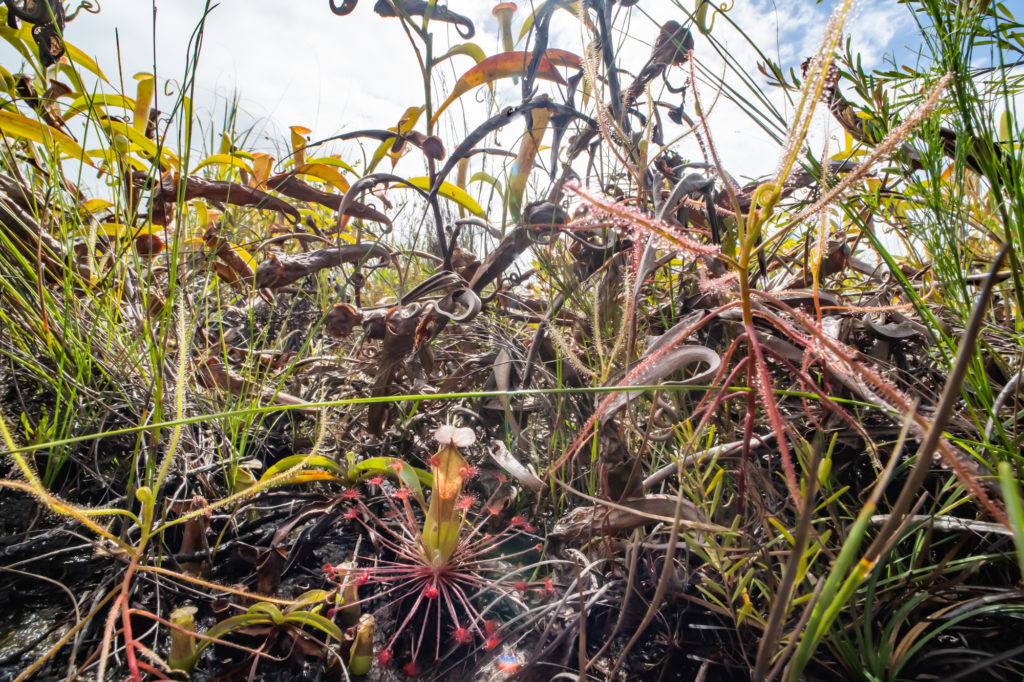
I was stunned by their upright pitchers that shone like beacons in the field, held proudly above the leaves by a stiff, coiled tendril. The hybrid vigour conferred by N. mirabilis bestowed an impressive size, with long vines that sprawled over the floodplain in all directions. Massive specimens of red Drosera aff. serpens scrambled through the tangle of pitcher plants using their spidery arms to climb upwards while otherworldly rosettes of D. petiolaris complemented the almost alien landscape. I was in carnivorous plant heaven!
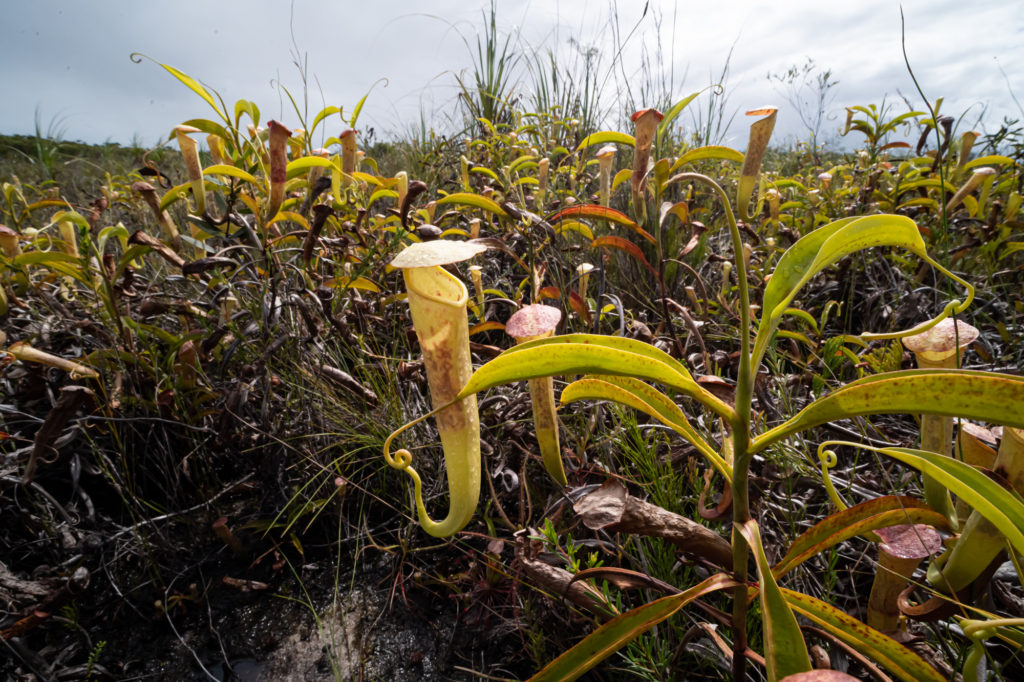
Eventually, late afternoon crept in and I returned to the car to drive to the campsite. I inserted the key and turned – Nothing happened… Nothing at all! My stomach dropped as I realised the corrugations must have taken their toll and that I was stuck. With the sun dipping low, I knew that it wouldn’t be long until crocodiles emerged from the depths, attracted to the scent of a depleted car battery, and I’d be forced to fight off dingoes that must have been stalking me, fully knowing that there was no phone reception! Perhaps it was the electric energy of all the carnivorous plants around me (or more likely a quick tightening of the terminals) but I somehow got the car started and successfully made it into town where it promptly died at the mechanic the next day.
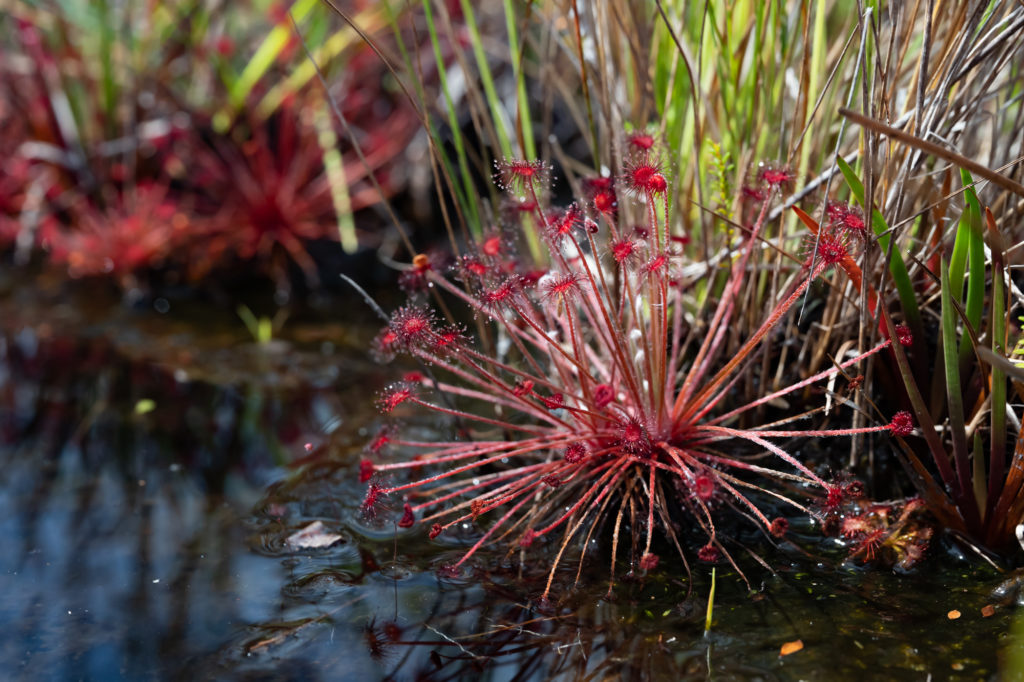
With a new battery and my car problems behind me, I was now so close to my final destination. Nothing could stop me- not even that slightly dodgy creek crossing that I would have baulked at just a few days ago. With newfound confidence, I sped through the rainforest and pulled up at the Pajinka car park just a few hundred meters from the top of Cape York.
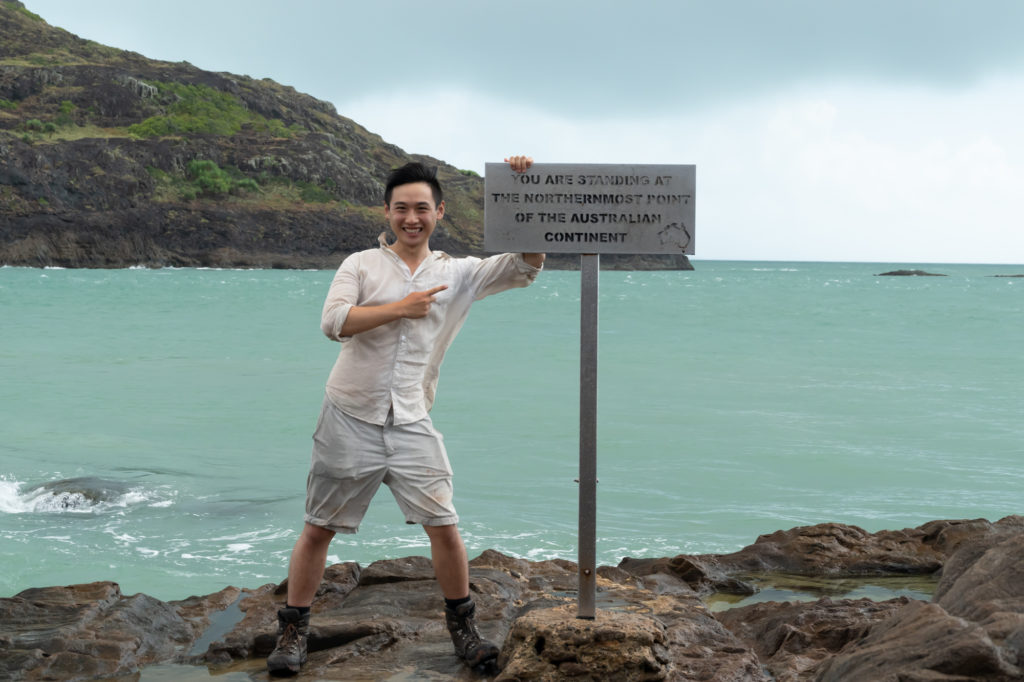
As I scrambled onto the rocky headland, I felt immense pride and elation as I joined the thousands of pilgrims that had made the legendary trip before me. After an obligatory selfie with ‘The Sign’ at the tip, I poked around the grasses on the headland where I was met with a final surprise – a Byblis liniflora growing in an unusually persistent seepage. After almost 2 months and over several thousand kilometres of driving, I finally found mainland Australia’s most northerly carnivorous plant!
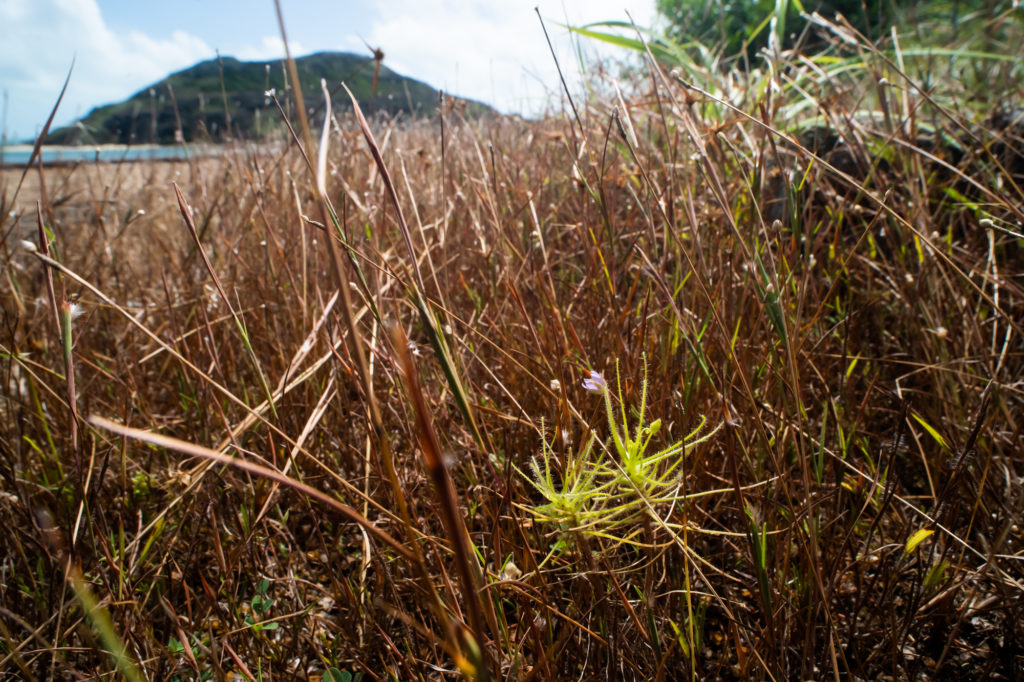
Acknowledgements: The author thanks Greg Bourke, Matthew McIntosh and Glen Moss for their insight and discussions of the field.
This article was published in the ICPS Carnivorous Plant Newsletter Volume 52 Number 1, March 2023

